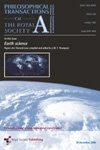An alternative title must be that cry of relief from the publican or barman "TIME's UP, Gentlemen please..."
Nothing like a bit of fundamental physics to keep our wits sharp.
TIME MEASUREMENT-UP DATE from Science
Perspectives
Physics:
When Does Photoemission Begin?
H. W. van der Hart
The process of photoemission was one of the effects that led to the formulation of quantum mechanics. If an atom or surface absorbs sufficient energy from incoming light, it can transfer that energy to an electron, which is then emitted. Theories of photoemission mainly focus on energetics—the temporal or dynamic aspects are ignored—but complex electron interactions occur that will create a slight delay between light absorption and electron emission. This time delay has been poorly understood for a fundamental reason: We cannot "see" an atom absorbing a photon. At best, we can follow subsequent emission events and use them to establish a "time zero" when the light was absorbed. A practical challenge has been that the time delay is extremely short, and only recently have direct experiments been feasible with the advent of lasers that emit pulses on the attosecond (as, 10–18 s) time scale. On page 1658 of this issue (1), Schultze and co-workers present measurements of time delays between different photoemission processes generated by the same ultrashort light pulse. This finding not only allows further studies of the timing of photoemission but also provides a new way to investigate electron interactions in atoms.
Centre for Theoretical Atomic, Molecular, and Optical Physics, School of Mathematics and Physics, Queen's University Belfast, Belfast BT7 1NN, UK.
Delay in Photoemission
M. Schultze,1,2,* M. Fieß,2 N. Karpowicz,2 J. Gagnon,1,2 M. Korbman,2 M. Hofstetter,1 S. Neppl,3 A. L. Cavalieri,2 Y. Komninos,4 Th. Mercouris,4 C. A. Nicolaides,4 R. Pazourek,5 S. Nagele,5 J. Feist,5,6 J. Burgdörfer,5 A. M. Azzeer,7 R. Ernstorfer,3 R. Kienberger,2,3 U. Kleineberg,2 E. Goulielmakis,2 F. Krausz,1,2 V. S. Yakovlev1,2,*
Photoemission from atoms is assumed to occur instantly in response to incident radiation and provides the basis for setting the zero of time in clocking atomic-scale electron motion. We used attosecond metrology to reveal a delay of Formula attoseconds in the emission of electrons liberated from the 2p orbitals of neon atoms with respect to those released from the 2s orbital by the same 100–electron volt light pulse. Small differences in the timing of photoemission from different quantum states provide a probe for modeling many-electron dynamics. Theoretical models refined with the help of attosecond timing metrology may provide insight into electron correlations and allow the setting of the zero of time in atomic-scale chronoscopy with a precision of a few attoseconds.
1 Department für Physik, Ludwig-Maximilians-Universität, Am Coulombwall 1, D-85748 Garching, Germany.
2 Max-Planck-Institut für Quantenoptik, Hans-Kopfermann-Straße 1, D-85748 Garching, Germany.
3 Physik Department, Technische Universität München, James-Franck-Straße, D-85748 Garching, Germany.
4 Theoretical and Physical Chemistry Institute, National Hellenic Research Foundation, 48 Vassileos Constantinou Avenue, Athens 11635, Greece.
5 Institute for Theoretical Physics, Vienna University of Technology, Wiedner Hauptstraße 8-10, 1040 Vienna, Austria.
6 Institute for Theoretical Atomic, Molecular and Optical Physics (ITAMP), Harvard-Smithsonian Center for Astrophysics, Cambridge, MA 02138, USA.
7 Physics and Astronomy Department, King Saud University, Riyadh 11451, Saudi Arabia.
More time...
More time...
All My Pages
Where my visitors are
A380's TRENT XWB
Materials Science and Engineering, Durable Development, Recycling..

Custom Search
Blog List-Free Science and Engineering Information Resources cf also Side and Bottom menu bars
-
-
Research Headlines - Motoarele cu ardere internă au un viitor luminos datorită aprinderii cu laser - [image: Image]Până să devină practice și tuturor accesibile mașinile electrice și alte inovații energetice, va mai fi larg folosit motorul cu ardere, rezul...4 years ago
-
Research Headlines - Inteligentne miasta zorientowane na obywateli - [image: Image]Dzięki technologiom IT usługi miejskie mogą być bardziej wydajne, dostępne i przyjazne dla środowiska. By takie rozwiązania były efektywne, m...4 years ago
-
Research Headlines - En route to safer, more reliable autonomous driving - [image: Image]The development of autonomous driving systems is currently a focus of research for the automotive industry. An EU-funded project has moved wo...4 years ago
-
Instant Inflation Systems for Stand-Up Paddle Boards - Inflatable Stand-Up Paddles (SUP) have provided great flexibility to enthusiasts and allowed the sport to grow in popularity. However, manually or electr...7 years ago
-
The List of Online and Free Access Journals about Metallurgy , Mining - The List of Online and Free Access Journals about Metallurgy and Mining RKOJ = Related Keywords of the Journal Open Mineral Processing Journal RKOJ: ...15 years ago
-
-
Scientific Reports - nature.com science feeds
Physical sciences : nature.com subject feeds
Materials science : nature.com subject feeds
Friday, 16 July 2010
Subscribe to:
Comments (Atom)





















